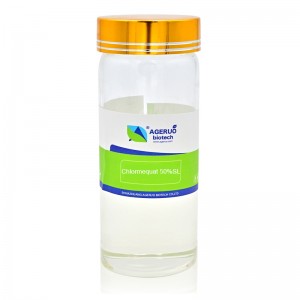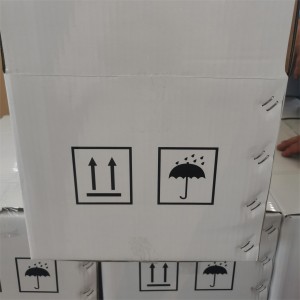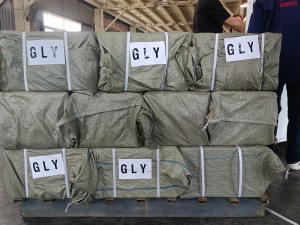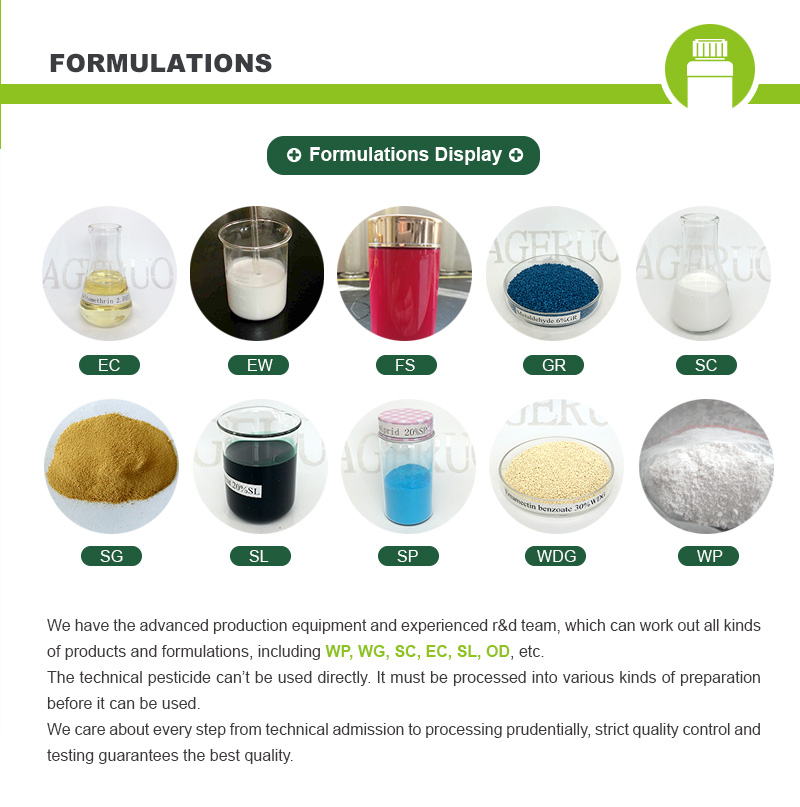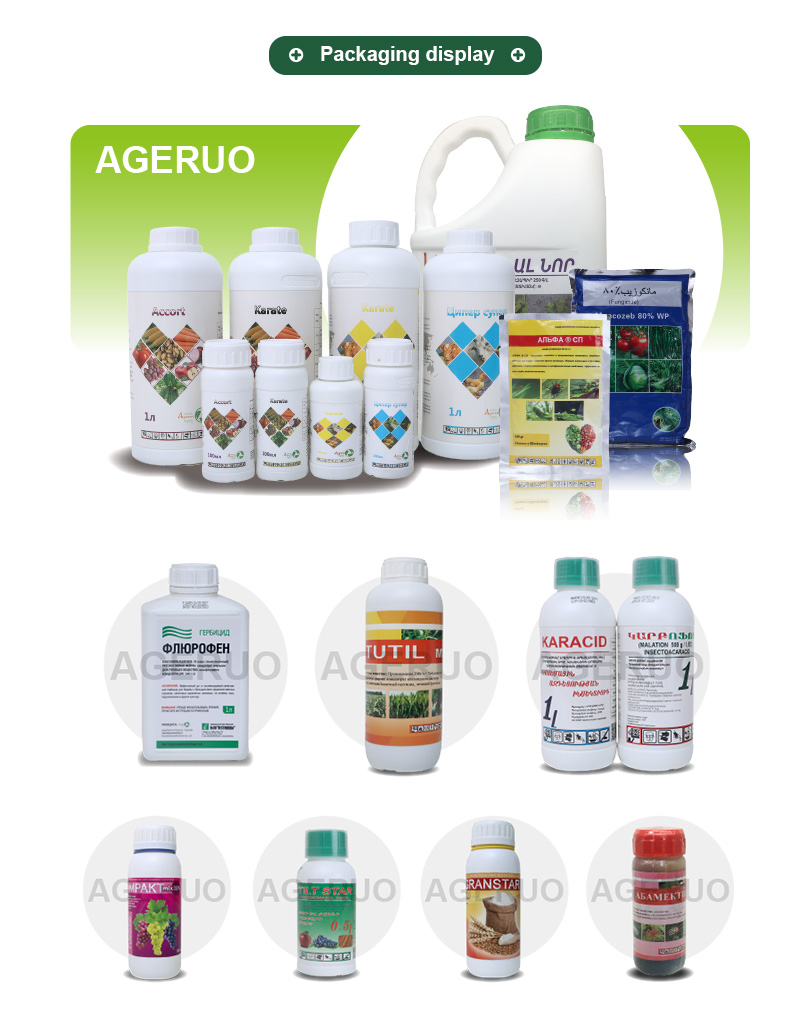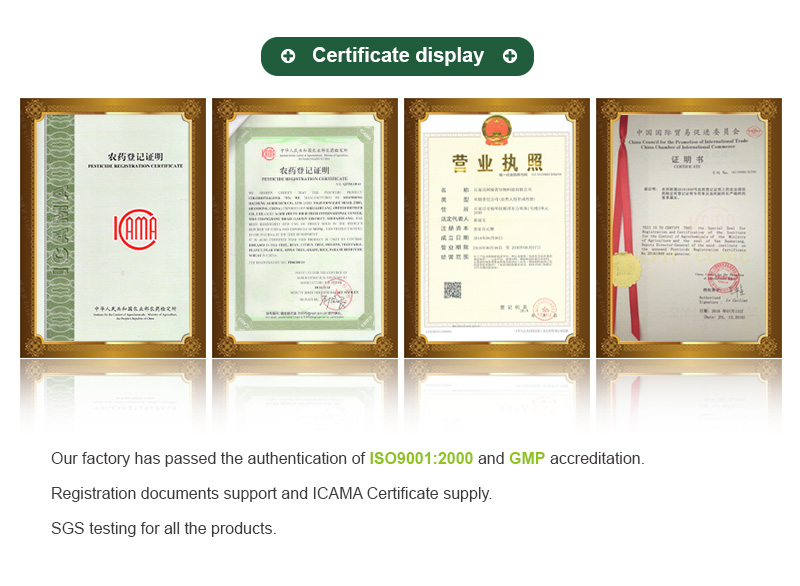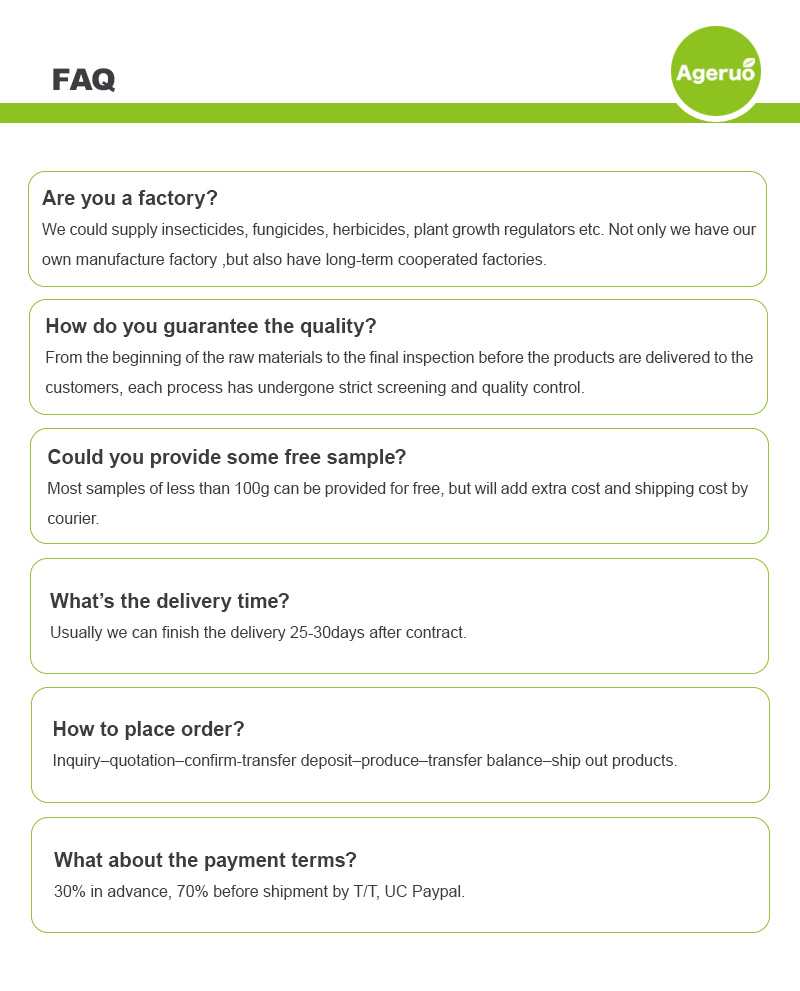High Quality Plant Growth Regulator Chlormequat 50% SL for Control Sugar
High Quality Plant Growth Regulator Chlormequat 50% SL for Control Sugar
Introduction
| Active ingredients | Chlormequat 50% SL |
| CAS Number | 7003-89-6 |
| Molecular Formula | C5H13Cl2N |
| Classification | Agricultural pesticides - plant growth regulators |
| Brand Name | Ageruo |
| Shelf life | 2 Years |
| Purity | 50% |
| State | liquid |
| Label | Customized |
Mode of Action
Chlormequat can be absorbed through the leaves, twigs, buds and roots of plants, and then transferred to the active parts. Its main function is to inhibit the biosynthesis of gibberellins. Its physiological function is to inhibit the vegetative growth of the plant, promote the reproductive growth of the plant, make the plant's internodes shorter, stouter, and lodging resistant, promote the deepening of leaf color, strengthen photosynthesis, and improve the plant's fruit setting rate, drought resistance, and cold resistance. and salt-alkali resistance.
Suitable crops:
Chlormequat is an excellent plant growth regulator that can be used in crops such as wheat, rice, cotton, tobacco, corn and tomatoes. It inhibits crop cell elongation but does not inhibit cell division. It can make plants shorter and stems shorter. Thick, green leaves, can make crops resistant to drought and waterlogging, prevent crops from growing and lodging, resist salt and alkali, prevent cotton bolls from falling, and increase the size of potato tubers.
use
Chlormequat can control the vegetative growth of plants (i.e., the growth of roots, stems, and leaves), promote the reproductive growth of plants (i.e., the growth of flowers and fruits), and increase the fruit setting rate of plants.
Chlormequat has a regulatory effect on crop growth, and can promote tillering, increasing spikes and yield. After use, the chlorophyll content increases, making the leaves dark green, photosynthesis enhanced, leaves thickened, and the root system developed.
Chlormequat inhibits the biosynthesis of endogenous gibberellins, thereby delaying cell elongation, making plants dwarfed, thickened stems, and shortened internodes, and can prevent plants from growing elongated and lodging. The inhibitory effect of chlormequat on internode elongation can be relieved by external application of gibberellins.
Chlormequat can increase the water absorption capacity of roots, significantly affect the accumulation of proline (which stabilizes cell membranes) in plants, and is beneficial to improving plant stress resistance, such as drought resistance, cold resistance, salt-alkali resistance, and disease resistance. .
After chlormequat treatment, the number of stomata in leaves is reduced, the transpiration rate is reduced, and drought resistance can be increased.
Chlormequat is easily degraded by enzymes in the soil and is not easily fixed by the soil. Therefore, it does not affect soil microbial activity or can be decomposed by microorganisms. It does not contain chlorine or bromine atoms and has no ozone depletion effect, so it is environmentally friendly.
Usage method
The effect of this growth regulator is exactly opposite to that of gibberellins. It is an antagonist of gibberellins, and its physiological function is to control the vegetative growth of plants (ie, the growth of roots, stems and leaves).
1. When peppers and potatoes begin to grow leggy, spray 1600-2500 mg/L of chlormequat on the leaves of potatoes during the budding to flowering stages, which can control ground growth and promote yield increase. Use 20-25 mg/L of chlormequat on peppers. Liters of chlormequat are sprayed on stems and leaves to control leggy growth and increase fruit setting rate.
2. Spray chlormequat solution with a concentration of 4000-5000 mg/liter on the growing points of cabbage (lotus white) and celery to effectively control bolting and flowering.
3. Use 50 mg/L of chlormequat aqueous solution on the soil surface during the tomato seedling stage to make the tomato plant compact and bloom early. If the tomatoes are found to be leggy after transplanting, you can use 500 mg/L chlormequat diluent and pour 100-150 ml per plant. The efficacy will show in 5-7 days, and the efficacy will appear after 20-30 days. disappear, return to normal
Other dosage forms
50%SL,80%SP,97%TC,98%TC


